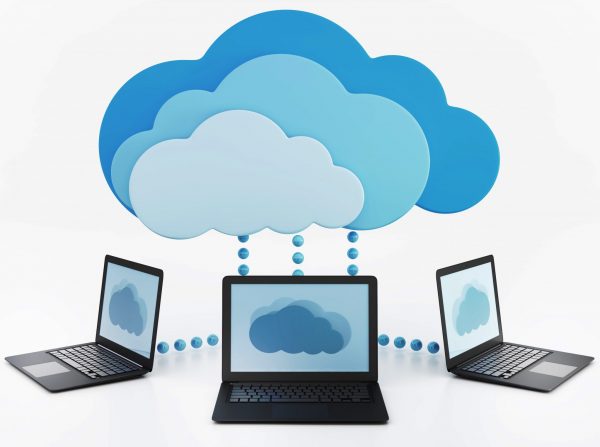We often encounter with the term “Cloud computing”. But we rarely know what it is actually… let us explore it with a simple example.. We all use Yahoo email, Gmail, or Hotmail etc daily in our life. We don’t need a software or a server to use them. All a consumer would need is just an internet connection and you can start sending emails. The server and email management software is all on the cloud ( internet) and is totally managed by the cloud service provider Yahoo, Google etc. The consumer gets to use the software alone and enjoy the benefits. The analogy is , ‘If you need milk, would you buy a cow ?’ All the users or consumers need is to get the benefits of using the software or hardware of the computer like sending emails etc. Just to get this benefit (milk) why should a consumer buy a (cow) software /hardware ?… this is what cloud computing in simple terms.

As a metaphor for the Internet, “the cloud” is a familiar cliché, but when combined with “computing,” the meaning gets bigger and fuzzier. Some analysts and vendors define cloud computing narrowly as an updated version of utility computing : basically virtual servers available over the Internet. Others go very broad, arguing anything you consume outside the firewall is “in the cloud,” including conventional outsourcing.
Technically speaking, Cloud Computing is a technology that uses the internet and central remote servers to maintain data and applications. Cloud computing allows consumers and businesses to use applications without installation and access their personal files at any computer with internet access. This technology allows for much more efficient computing by centralizing storage, memory, processing and bandwidth.
When talking about a cloud computing system, it’s helpful to divide it into two sections: the front end and the back end. They connect to each other through a network, usually the Internet. The front end is the side the computer user, or client, sees. The back end is the “cloud” section of the system.
The front end includes the client’s computer (or computer network) and the application required to access the cloud computing system. Not all cloud computing systems have the same user interface. Services like web-based email programs leverage existing web browsers like Internet Explorer or Firefox. Other systems have unique applications that provide network access to clients.
On the back end of the system are the various computers, servers and data storage systems that create the “cloud” of computing services. In theory, a cloud computing system could include practically any computer program you can imagine, from data processing to video games. Usually each application will have its own dedicated server.
A central server administers the system, monitoring traffic and client demands to ensure everything runs smoothly. It follows a set of rules called protocols and uses a special kind of software called middleware. Middleware allows networked computers to communicate with each other. Most of the time, servers don’t run at full capacity. That means there’s unused processing power going to waste. It’s possible to fool a physical server into thinking it’s actually multiple servers, each running with its own independent operating system. The technique is called server virtualization. By maximizing the output of individual servers, server virtualization reduces the need for more physical machines.
If a cloud computing company has a lot of clients, there’s likely to be a high demand for a lot of storage space. Some companies require hundreds of digital storage devices. Cloud computing systems need at least twice the number of storage devices it requires to keep all its clients’ information stored. That’s because these devices, like all computers, occasionally break down. A cloud computing system must make a copy of all its clients’ information and store it on other devices. The copies enable the central server to access backup machines to retrieve data that otherwise would be unreachable.
The applications of cloud computing are practically limitless. With the right middleware, a cloud computing system could execute all the programs a normal computer could run. Potentially, everything from generic word processing software to customized computer programs designed for a specific company could work on a cloud computing system.